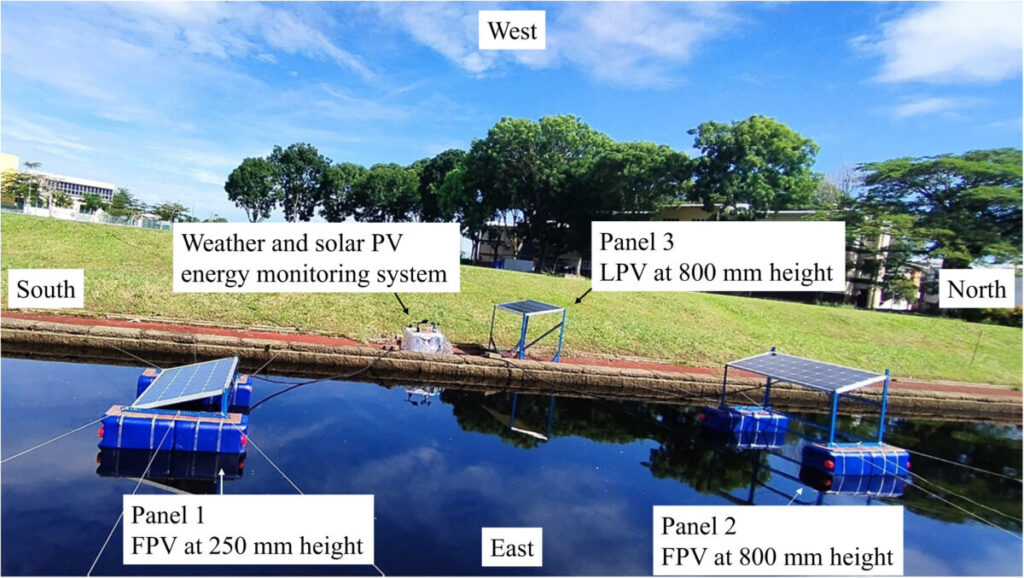Scientists have tested the performance of floating PV panels at an altitude of 800 mm and 250 mm above their floating structures. Their thermal and electrical performance was compared to those of a reference country system and the highest panel proved to show the largest cooling effect.
Researchers from Curtin University of Malaysia have compared the thermal behavior of floating PV (FPV) with different heights, which also benchmarking against a land system.
“We analyze it in a real environment,” said the corresponding author Ramanan CJ PV -Magazine. “This study in experimental the results of our earlier computational work, and with regard to the next step, we are working on numerical estimates.”
The study was conducted in Miri, a city in Eastern Malaysia, on a 5-meter wide water passage. All setups include a 100 W monocrystalline PV moduletype with an efficiency of 15.5%. The dimensions were 1,252 x 670 x 30 mm.
Panel 1 was an FPV panel, installed 250 mm above the water, while FPV 2 800 mm was installed above the water. Panel 3 was installed on the land, also 800 mm above the ground. The ideal Solar PV tilt corner for Malaysia is 15 ° and the Azimut was held at 0 ° South for all three systems.
Image: Curtin University, Applied Energy, CC by 4.0
The FPVs were built using polyethylene with high density (HDPE) cans, plywood, steel tire covers, slot corner beams, nuts and bolts; While the land of PV was built using a slot corner bar. Meet sensors were connected to a Raspberry Pi computer, with electronics housings in a plastic box and the threads covered with PVC management.
Data was collected for a total of six days from 16 to 23 July 2024, with the analysis showing that FPV showed the largest cooling effect with a high height, followed by the identical land PV (LPV) system, and then the FPV with low high harvest.
“As a result, the FPV reached temperatures of more than 2 C cooler than the LPV system with a low height, although this cooling advantage mainly took place when sunrise was low and was unsuitable for effective energy generation,” the academics explained. “During the day, the FPV delivered a cooling advantage 57% of the time at a high height, with a temperature range of 0C to 2C lower maintained than the LPV with the same height.”
They also discovered that the cooling effect made the FPV with high high harvest the most effective system. With regard to the power generation, the FPV reached a peak performance improvement of 2.45% compared to the FPV with a low height. It also achieved a peak performance improvement of 1.47% compared to the LPV in the afternoon.
“The FPV with a low height, on the other hand, showed minimal cooling benefits during most of the day, with temperatures mainly ranging from 0C to 1C above the LPV,” the scientists added.
Their findings were presented in “Thermal behavior of floating photovoltaisches: a comparison of performance at different heights and benchmarking against land -based photovoltaic“Published in Applied energy.
This content is protected by copyright and may not be reused. If you want to work with us and reuse part of our content, please contact: editors@pv-magazine.com.
Popular content


